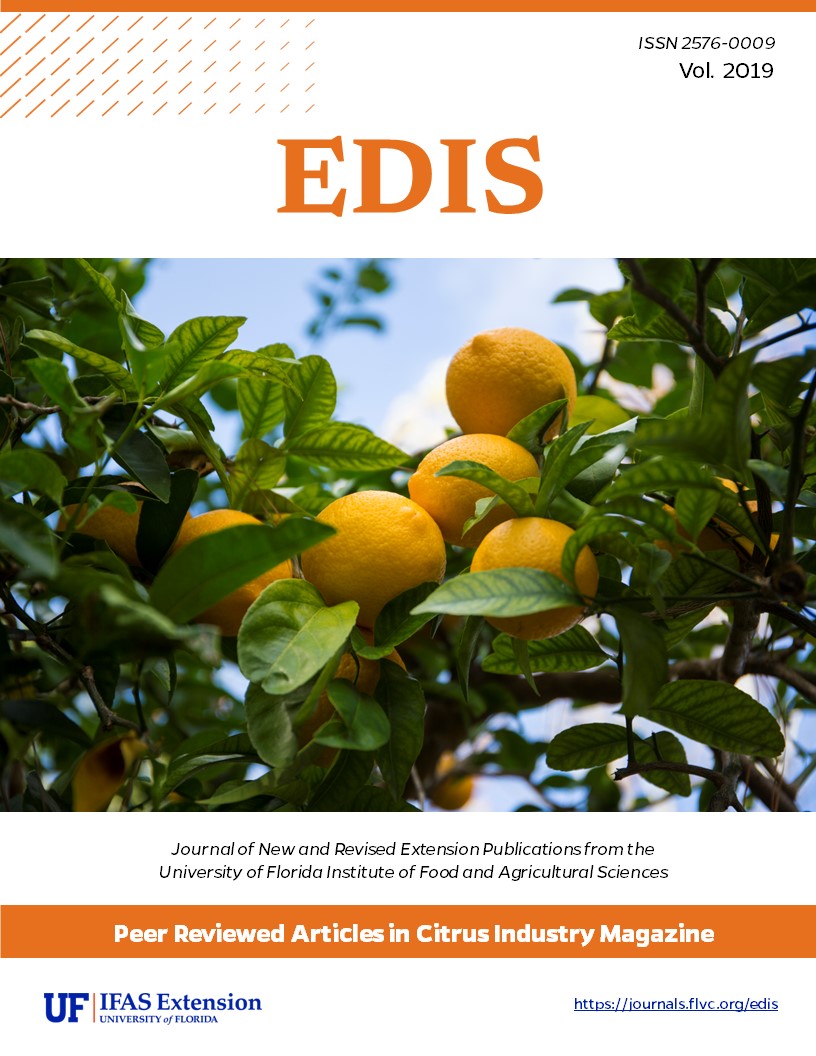Abstract
Florida citrus is a trailblazer for incorporation of IPM in US agriculture. We believe a return is not only possible but could be very beneficial. Returning to a more sustainable paradigm could also coincide with economic reward. Implementation of thresholds and timing sprays to flushing should maximize the impact of spraying. The above example from Stansly and Monzo indicates that one well-timed dormant spray followed by 3 additional sprays triggered by a 0.2 psyllids / tap action threshold can provide equal or greater economic return than 10 calendar sprays in the same grove. Reducing sprays allows buildup of the biological control agents already present in Florida and allows them to work for you. Diversifying selection forces complicates development of resistance for the insect population. Resistance to one tactic can be compensated for by the others. Therefore, the IPM system can be further improved by not only allowing biological control to do its work by reducing insecticide input, but also by incorporating cultural controls. Psyllid exclusion technologies, such as protective screening and kaolin clay, are proving effective. Protecting grove borders with targeted sprays can reduce costs of whole-grove sprays. Significant progress has also been made toward reducing psyllid access to young citrus by planting on UV reflective mulches. Finally, IPM-based management will likely benefit from area-wide implementation. Many of the tools for practicing IPM in Florida citrus are already here; however, it takes integration to assemble the puzzle in practice.
Peer reviewed through UF/IFAS Citrus Research and Education Center; published in Citrus Industry Magazine July 22, 2019

